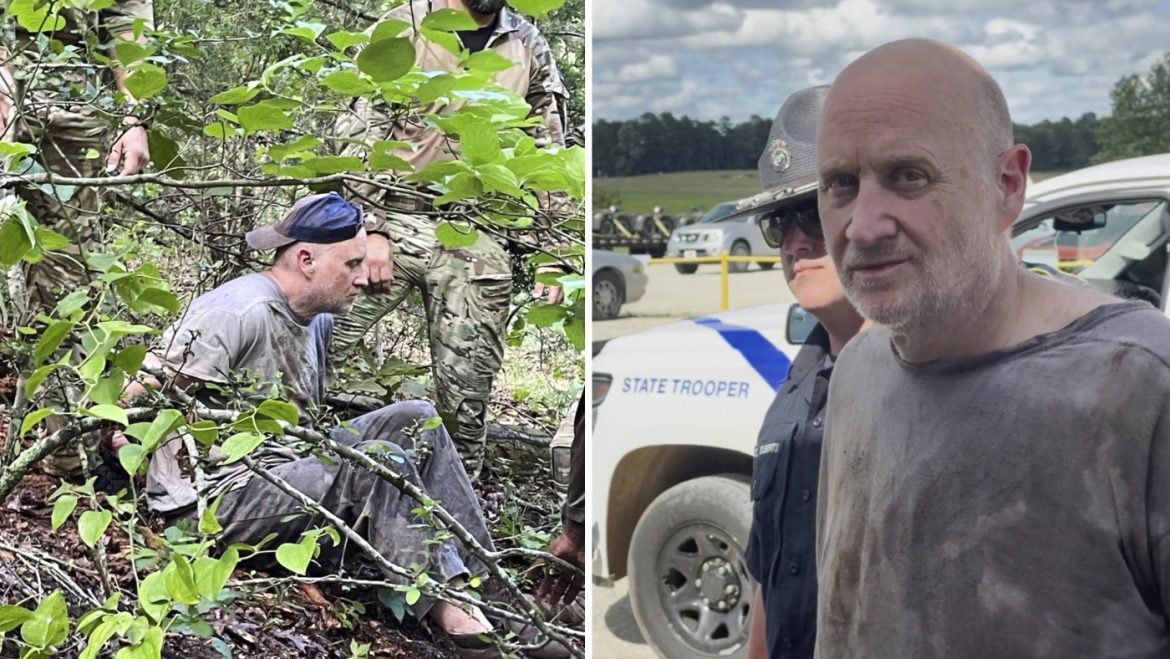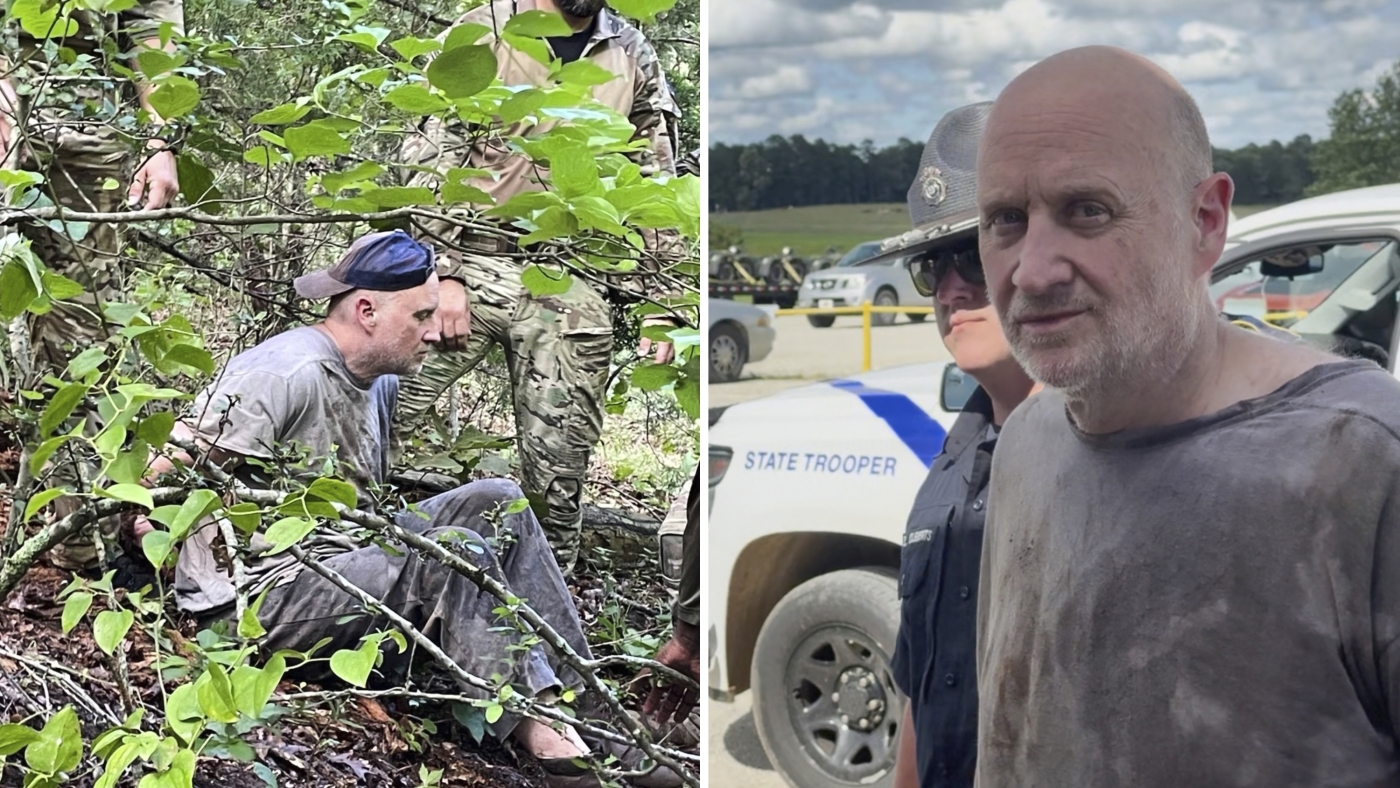The Case of Grant Hardin: A Former Police Chief’s Prison Escape and Recapture in Arkansas
The dramatic escape and subsequent recapture of Grant Hardin, a disgraced former police chief convicted of murder and rape, has riveted attention across Arkansas and beyond. His story intertwines themes of criminality, law enforcement betrayal, prison security challenges, and a tense manhunt in the rugged terrain of the Ozark Mountains. This report delves into the details of Hardin’s crimes, his brief tenure in law enforcement, the escape itself, the pursuit, and the eventual capture, providing a comprehensive overview of this extraordinary episode.
—
Background: From Police Chief to Convicted Killer
Grant Hardin, once the chief of police in Gateway, Arkansas—a small town near the Arkansas-Missouri border—served in that role for approximately four months in 2016. His abrupt fall from grace came after he was convicted and sentenced on charges of first-degree murder and rape. Due to the nature of his crimes, Hardin became infamously known as the “Devil in the Ozarks,” a moniker reflecting the severity and notoriety of his offenses.
Despite his position in law enforcement, Hardin’s criminal activities led to a lengthy prison sentence, lasting multiple decades. His case serves as a stark and unusual example of a police officer turned criminal, contributing to a breach of public trust and spotlighting the complexities of background vetting in small-town police departments.
—
The Escape: A Disguise and a Calculated Breakout
On May 25, Hardin escaped from the North Central Unit, a medium-security prison near Calico Rock, Arkansas. This facility is sometimes referred to by authorities as the “North Central Unit,” indicative of a structured but not maximum security prison.
The circumstances of the escape were particularly audacious and premeditated. Hardin wore a disguise resembling a prison guard’s uniform, enabling him to bypass controlled entry points unnoticed. This ruse suggests a level of planning and resourcefulness, as well as potential knowledge of prison operations, a factor likely stemming from his law enforcement background.
The use of an impersonation tactic is rare and striking, highlighting vulnerabilities within the prison’s security protocols. Details on how Hardin acquired this disguise or manipulated the system remain scarce, but the act intensified scrutiny on the corrections department’s oversight and the procedures for monitoring inmate movement.
—
The Manhunt: Searching the Rugged Ozarks
Following Hardin’s escape, law enforcement agencies launched a massive manhunt lasting nearly two weeks. The search focused on the rugged Ozark Mountains region, known for its challenging terrain, dense forests, and remote areas, which could provide ample hiding places.
Joint efforts involved local Arkansas authorities, the FBI, and the U.S. Marshals Service. These agencies combined forces and resources, issuing a $25,000 reward for information leading to Hardin’s capture. This sizable reward underscores both the danger Hardin posed and the urgency to apprehend him quickly.
The terrain’s difficulty complicated the search, as teams had to scan miles of wilderness in all weather conditions. The narrow escape route, being only about 1.5 miles northwest from the prison, suggested Hardin may have intended to remain close initially before attempting a longer-term plan for evasion.
—
Recapture: Ending the Escape at Close Quarters
After nearly two weeks on the run, Hardin was recaptured approximately 1.5 miles from the prison. Authorities apprehended him while he was wearing another disguise designed to make him appear as a law enforcement officer.
Confirmation of Hardin’s identity was made through fingerprint analysis at the point of arrest. The rapid re-arrest so close to the prison raises questions about his intended escape strategy and whether his plan was disrupted by the extensive law enforcement presence in the area.
The recapture also validated the coordinated efforts of law enforcement agencies and the efficiency of their search tactics within difficult terrain, despite initial concerns about the prison’s security weaknesses.
—
Implications for Law Enforcement and Prison Security
The entire sequence—from Hardin’s criminal convictions to his escape and subsequent recapture—carries significant implications:
– Law Enforcement Credibility: Hardin’s case undermines trust in police integrity, particularly in small communities where residents expect their officers to uphold the law unequivocally. His criminal acts punctuate the potential damage when those entrusted with public safety commit egregious crimes.
– Prison Security Measures: The escape using a disguise highlights gaps in prison security protocols, specifically regarding uniform access and controlled movements. It raises issues for correctional administrations nationwide about evaluating internal vulnerabilities to prevent similar breaches.
– Coordination Among Agencies: The involvement of the FBI, U.S. Marshals, and local authorities demonstrates the importance of multi-agency cooperation during high-risk manhunts. Combining resources accelerates the detection and capture of dangerous fugitives.
– Community Impact: Gateway, Arkansas, and surrounding areas faced heightened anxiety during the manhunt. The proximity of Hardin’s recapture to the prison site likely provided some relief but also prompted reflection on the capacity of rural law enforcement to manage such crises.
—
Conclusion: A Cautionary Tale of Justice and Security
Grant Hardin’s journey—from a police chief to a convicted murderer and his dramatic escape and capture—serves as a compelling narrative about the thin line between protector and predator. His ability to exploit his background and the prison’s security flaws ironically emphasizes the threats posed by insiders familiar with law enforcement operations.
The swift recapture curtailed what might have been a longer and more dangerous saga, but it also exposed systemic weaknesses warranting attention. As communities demand justice and safety, cases like Hardin’s underscore the need for vigilance in vetting law enforcement personnel, maintaining robust prison security, and fostering effective inter-agency collaboration.
Ultimately, Hardin’s episode stands as a stark reminder that crime and justice operate in complex and sometimes unsettling ways, blending human fallibility with institutional challenges, and that the pursuit of accountability is never straightforward but always essential.


